When most people think about landscape irrigation, they envision traditional systems: sprinkler heads, drip lines, and controllers. However, we aim to shift this narrative. Over the past 15 years, we have explored innovative ways to manage water in the landscape that go beyond conventional irrigation methods. This journey has shown that there is a better, more sustainable, and resilient approach to landscape water management.

Rethinking Irrigation
In landscape architecture education, irrigation design can often seem straightforward, with logical conventions and clear rules. Despite this, we believe there are more efficient ways to manage water. Over the years, the firm has had the opportunity to work on numerous projects that embrace alternative water management strategies—often reducing or even eliminating the need for traditional irrigation.
The Current State of Water in Austin
Before diving into solutions, it is crucial to consider Austin’s current water reality. The region has been experiencing a severe drought for seven years and is currently (as of fall 2024) under Stage 2 water restrictions. The perception of water in Austin frequently swings between scarcity during droughts and excess during flooding. However, we view water not as a nuisance or a rare commodity, but as a valuable resource to be harnessed and conserved. Through thoughtful design, we strive to transform landscapes from water-dependent systems into ones of abundance.
Low-Tech, High-Impact Solutions
Studio Balcones employs low-tech landscape solutions to create ‘green’ (or even ‘blue’) stormwater infrastructure, which can reduce or eliminate the need for traditional irrigation. These approaches are particularly important in the face of an increasingly extreme climate. While the idea of “passive” irrigation might sound hands-off, it actually requires proactive design to manage water sustainably. Here are some of the principles and examples that we have successfully implemented:
1. Slow, Spread, and Sink: This principle focuses on managing water on-site by slowing its flow, spreading it across the landscape, and allowing it to infiltrate into the soil. This not only nourishes vegetation but also reduces reliance on potable water resources.
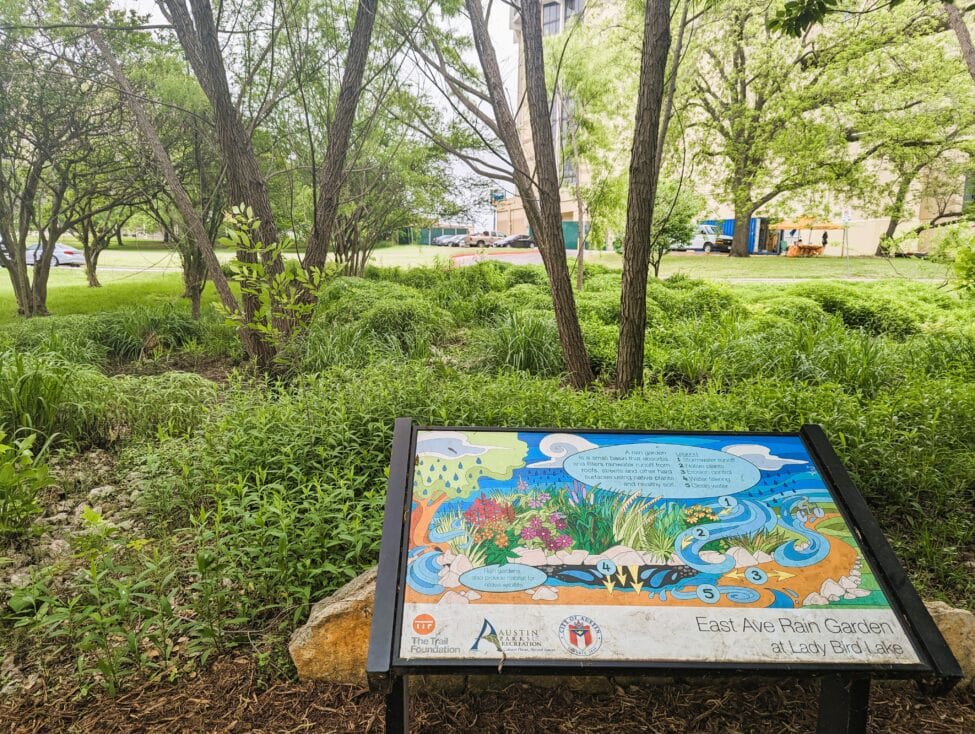
2. Nature-Based Solutions: Instead of using complex stormwater piping, drains, or engineered soils, Studio Balcones enhances existing site conditions. We select native plants and design soil communities that align with the local water regime.
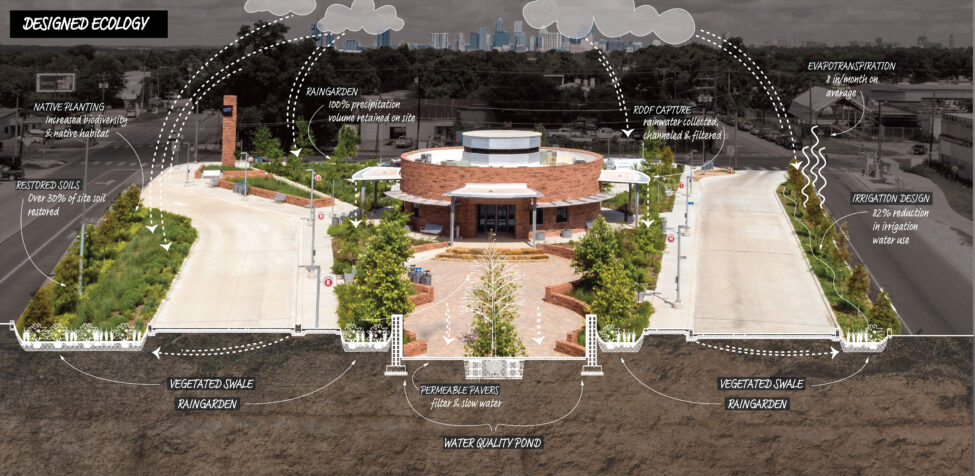
Real-World Applications
We have successfully implemented these principles in several projects:
– CARTS Bus Terminal and Plaza: This project achieves 100% stormwater capture and treatment on-site. It utilizes ‘purple pipe’ systems and demonstrated exceptional winter resilience during Storm Uri.
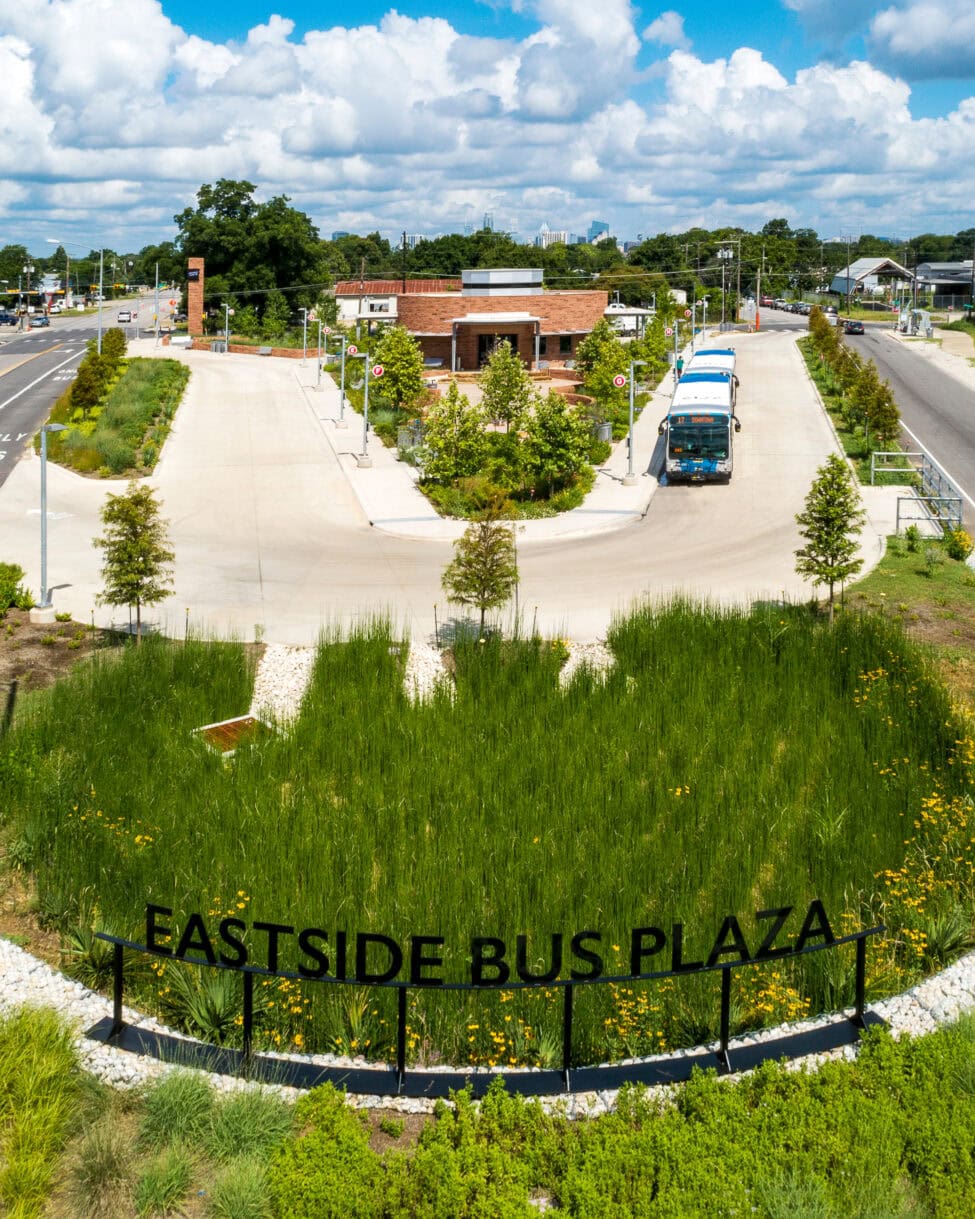
– Pharr Tennis Center at Patterson Neighborhood Park: Despite incorporating eight full-size tennis courts, this project achieved a 100% reduction in outdoor water use and required no conventional stormwater infrastructure.
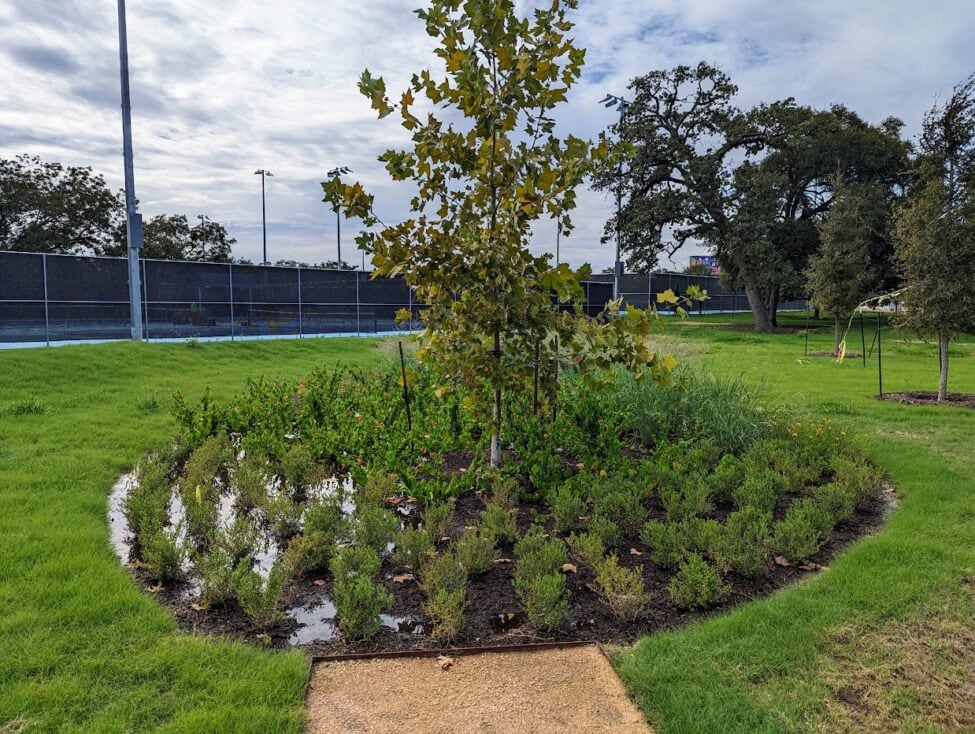
– Butler Hike and Bike Trail Green Stormwater Infrastructure (GSI): The rain gardens at this site have thrived without irrigation from day one, remaining resilient even 5–8 years later.
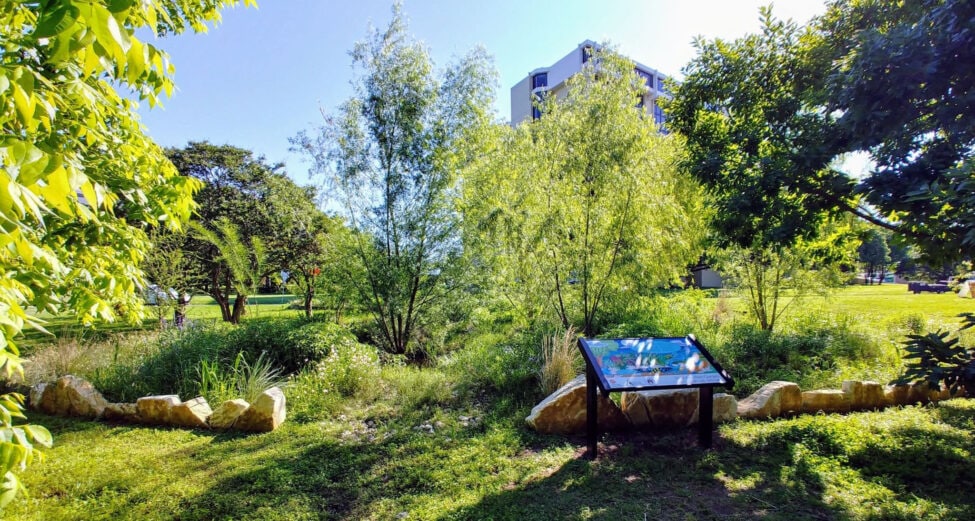
Challenges and Considerations
Designing landscapes that manage water sustainably presents unique challenges. It requires a deep understanding of the natural water regime and the needs of native vegetation. Studio Balcones also navigates local regulations that can sometimes pose obstacles to low-tech solutions. Additionally, factors like evaporation and evapotranspiration must be considered to ensure the long-term success of these landscapes.
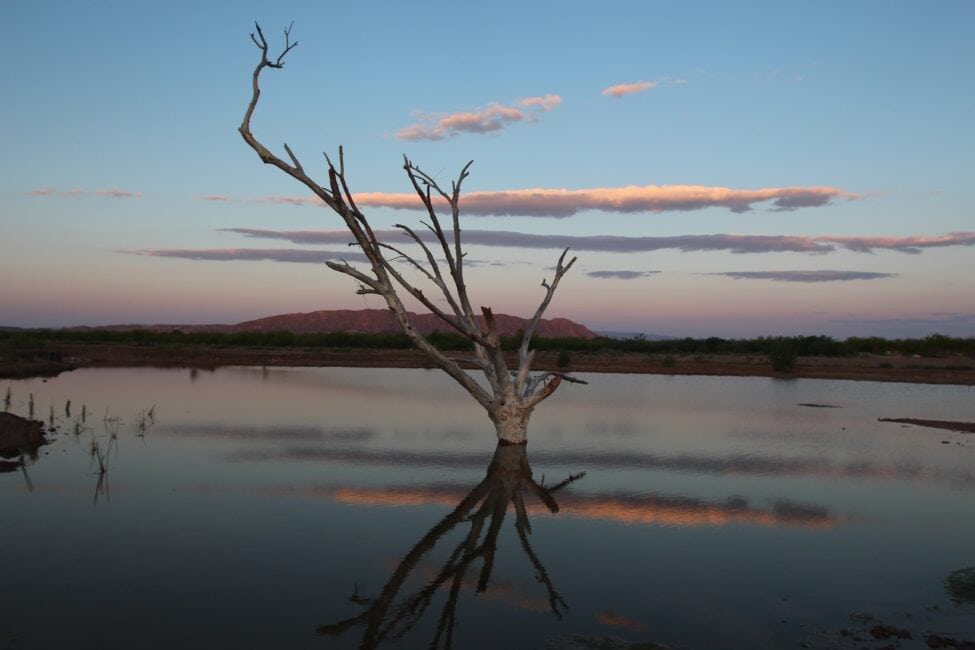
Tools and Resources
For those interested in learning more about these strategies, we recommend resources such as Lancaster’s books and the San Antonio River Authority’s Green Stormwater Infrastructure Manual. These materials offer valuable insights into designing with water conservation in mind.
Continuing the Conversation
We invite those of you that are interested in sustainable water management to reach out to us with any questions. We are eager to discuss how innovative and low-tech water management strategies can be incorporated into future projects to create landscapes that not only conserve water but also thrive.
